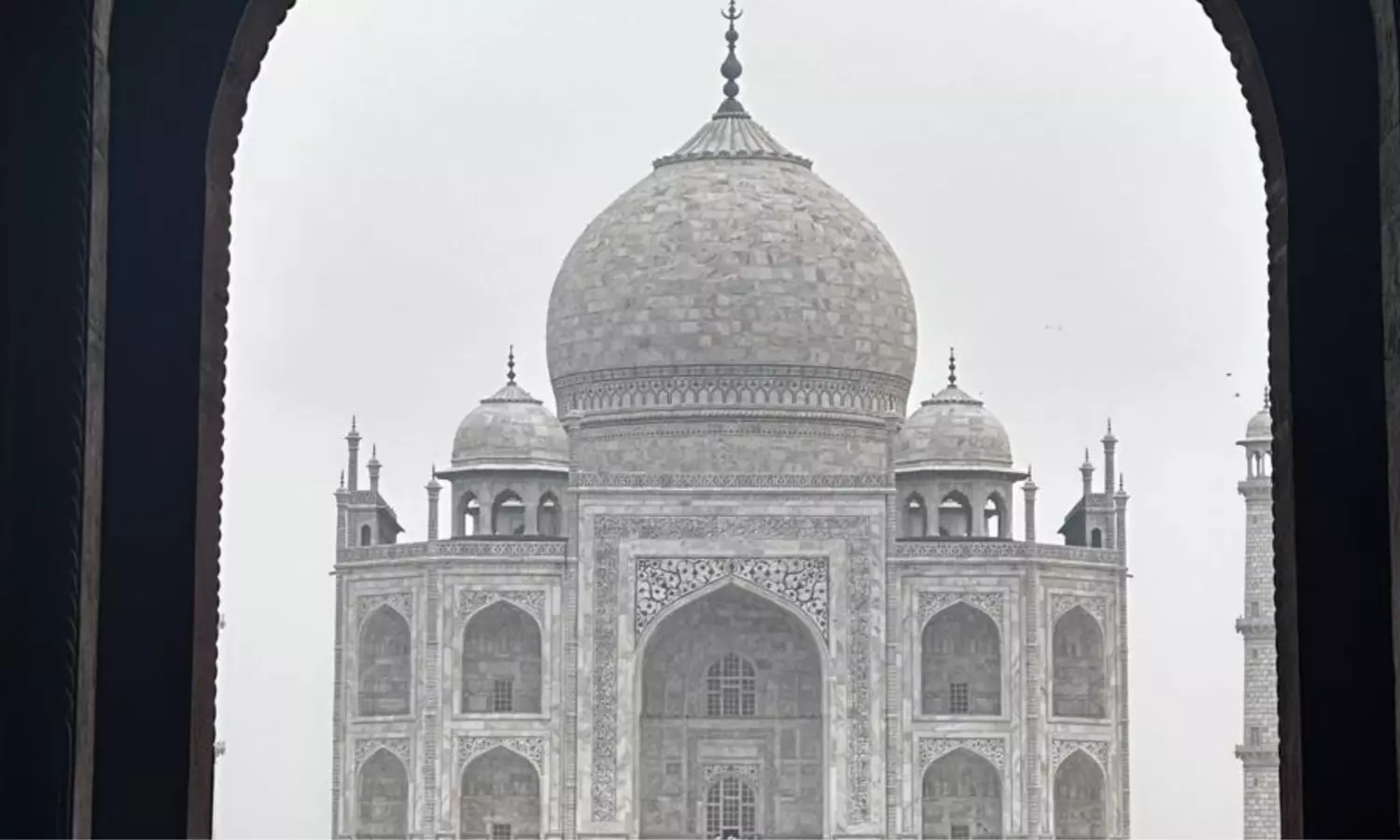Farrukh Dhondy |Adventures on a Taj Mahal visit… Of vandalism and some other tales
A personal account of visiting the Taj Mahal, photographing its inlay work, and a memorable story from the past;

“O come with old Bachchoo and leave the lot,
Of Mira, Kabir and Ghalib forgot
Let Javed write Bollywood,
Enchanting for every mood,
Or Faiz embrace Pakistan, heed them not!”
From The Rubaiyat of Diggerydoo, by Bachchoo
Being in Delhi for a book launch — part of a busy tour of lectures, workshops and a visit to my sister — I take a day off to get to the Taj Mahal in Agra.
One reason is to take photographs of the inlay work of semi-precious stones in the marble of the tomb. I’ll tell you why!
A late friend of mine, who shall for compelling reasons remain nameless, had in his vast collection of art, authentic Mughal miniatures, some extremely precious paintings by Hokusai — him of The Wave — by David Hockney and priceless others. Among these were two framed seventeenth-century paintings commissioned by the Emperor Shah Jahan of floral patterns for the inlay work of semi-precious stone in the marble of the Taj. My purpose was to see and photograph the inlaid patterns and compare these to the certified paintings.
Attempting to access a tourist ticket to enter the Taj complex was a bit enigmatic. At all historic sites in India there is a separate charge with vastly differentiated prices for “foreigners” and for “Indians”.
Crisis of identity! Which queue to join? Should I pay Rs 45 as an Indian or was I to join the “foreigner’s” queue and pay Rs 1,130? — or some such discrepancy.
The counter operative might have been able, through the six-by-six-inch hole in the wall, to see my face. He began to ask me for any documents which would prove I was Indian. I’m still waiting for my replacement Overseas Citizen of India (OCI) card so I said I didn’t have any.
I wasn’t even sure that, though the OCI card would suggest that I was “Indian”, it would serve the purpose of getting me cheaper access. The way I persuaded the counter-wallah that I was authentically Indian was by answering his queries and doubts by simply saying: “Chhodo yaar. Kyon buddai aadmi ka punga ley rahe ho?”
I got the Indian ticket.
The trials of the trip were far from over. The queues of separate genders had to pass through the security arches and stand on wooden platforms to be searched for metal. The security officers seemed as impatient to move the queues on as were we queuing visitors and only applied their electronic detector-wands cursorily to our pockets bulging with mobile phones, wallets and anything else we were carrying. Hand grenades? Ever since Israel rigged the walkie-talkies of Lebanese Hezbollists to explode, I’ve wondered why the same can’t be done for mobile phones escaping this cursory scrutiny at all manner of Indian institutions such as hotels and galleries.
Is the meaningless frisk a ploy to employ more cops and entrust them with lighter duties than catching thieves and murderers or directing the ungovernable traffic of our cities?
And then came the actual access to the Taj. Again, long queues for the two sets of five or six steps onto the perimeter platform of the tomb, the other several access steps being cordoned off for no apparent reason. Or perhaps making us queue is a form of trial and torture to earn the right to see the Taj?
Or is it a strategy to provide employment for the policemen and women who sit behind the cordoned-off steps to ensure that no-one attempts to pass under the rope cordons?
To add to the frustration, I was misdirected by a sign with an arrow which said access to the platform for “general ticket holders”. I fancied myself as one of these and walked the hundred or more metres to the steps, only to be told by the steps-guardian policewoman that I was at the wrong steps and had to queue 300 metres down the platform periphery.
Got there, got the snaps of the inlaid patterns. Around the inner sanctum a large notice asks the visitors to be “QUITE”. The Archaeological Survey of India should really correct that.
Another personal story about these inlaid semi-precious stones:
Gentle reader, in my first year at Cambridge University a girlfriend proposed in the holidays that I hitch down to the western tip of England to Penzance and we could visit the Scilly Isles. I stuck my thumb out on the road and a gentleman picked me up.
He asked all about me, and as we got towards Gloucestershire he said: “Open the glove compartment and get the jewellery box out of it.” I did.
“See what’s in there,” he said. It was a little blue semi-precious stone.
“So, you’re Indian. Where do you think that comes from?”
I said I had no idea.
“Ah, it’s from the Taj Mahal. When I was there, I dug it out with my pen-knife!”
He seemed proud. I was appalled.
“That’s absolute vandalism. That’s criminal…,” I said.
He pulled over sharply to the side of the road and ordered me to get out of his car. I gratefully did and waited a trifle nervously, as it was getting dark, on a deserted road, for the next lift.
I did get to Penzance.
That was sixty years ago and I didn’t see any holes from which the vandal had taken out the stone. Well done, Archaeological Survey… but the spelling of “QUIET”???
